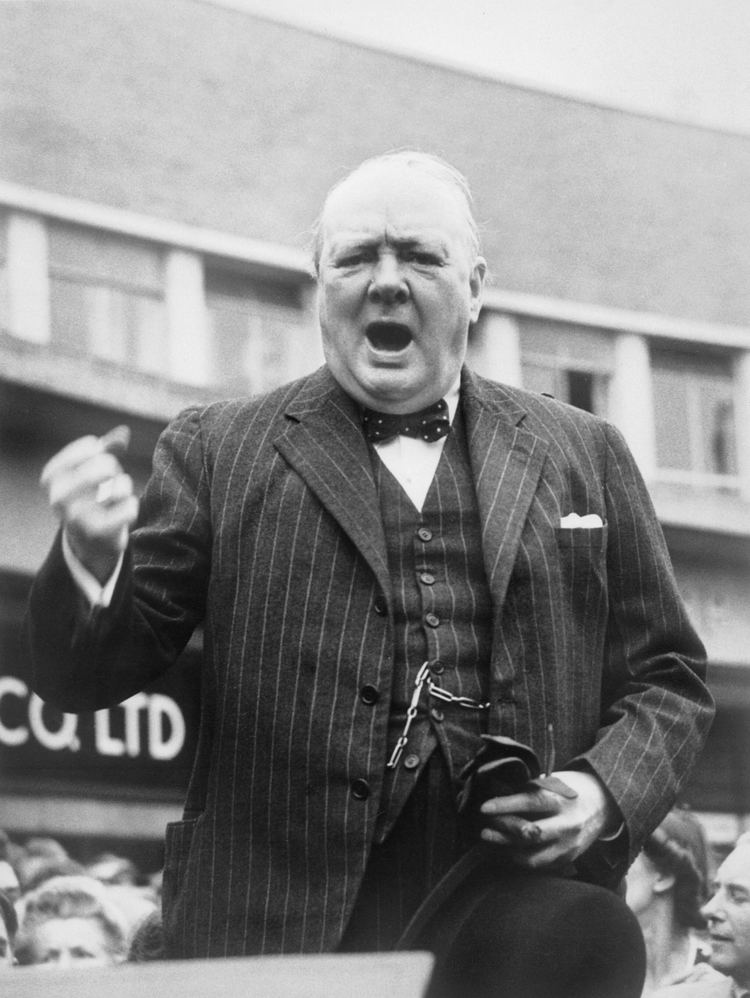 | ||
The caretaker ministry of 1945 was a United Kingdom Ministry, which held office from 23 May 1945 until 26 July 1945, during the latter stages of the Second World War. The head of the government was the Prime Minister since 1940, Winston Churchill of the Conservative Party.
Contents
Formation of the caretaker government
After the defeat of Italy and Germany, in the Second World War, Winston Churchill (leader of the Conservative Party) proposed to Clement Attlee (leader of the Labour Party) and Sir Archibald Sinclair (leader of the Liberal Party) that the war-time coalition should continue until victory over Japan.
At first it seemed agreement would be reached, but at the Labour Party Conference in 1945 opinion was hostile to a continuation of the coalition. Attlee wrote to Churchill to confirm that his party wanted an election in October, and would leave the coalition then.
Churchill (under pressure from his party to hold a quick election to exploit his standing as the man who had won the war) then resigned as Prime Minister whilst the Labour conference was still in session. This brought the war-time coalition government to an end on 23 May 1945. King George VI the same day invited Churchill to form a government pending the general election.
The government was known officially as the "National Government", implying it to be a continuation of the Conservative-dominated coalition of the 1930s, and was formed from members of the Conservative Party and the groups and politicians who had been associated with that government. It was unofficially known as "the caretaker ministry."
The Liberal Party were determined to fight the general election as an independent party so they did not join the caretaker government. However one Liberal Member of Parliament, Gwilym Lloyd George, accepted an invitation to join the ministry.
Speaking at his constituency of Woodford on 25 May, Churchill commented of the name by which the ministry had become known: “They call us "the Caretakers"; we condone the title, because it means that we shall take every good care of everything that affects the welfare of Britain and all classes in Britain.”
General election and resignation of Churchill
Parliament was dissolved on 15 June 1945. Polling day was on 5 July 1945 and, after a delay caused by the need to collect the votes of those serving overseas, the results were declared on 26 July 1945. Churchill, having been defeated in the election, resigned that day and was replaced as Prime Minister by Clement Attlee.
Cabinet
List of Ministers
Members of the Cabinet are in bold face.
